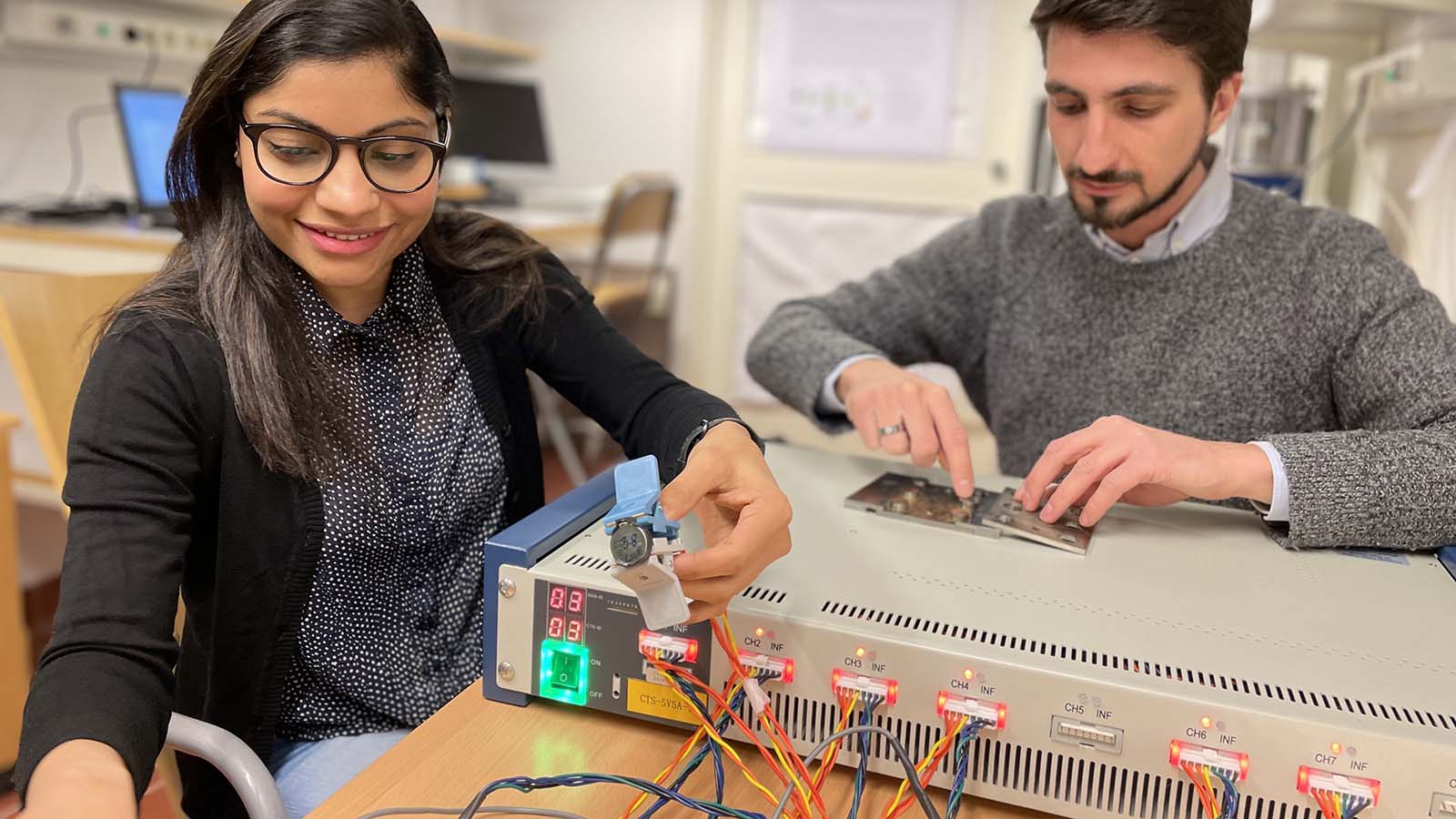Research for recharge-able button batteries that substitute lithium with non-toxic materials

ITM's Material Science and Engineering and Production Engineering departments have combined forces to concurrently research battery materials and battery production processes. The aim is to optimise both the cost and performance of rechargeable button batteries made with non toxic materials.
Lithium-ions are the basis of current battery technologies. Since lithium is a rare resource, one concern is that there may be a future shortage of lithium – especially with the increasing pace of electrification of road vehicles. People are also concerned about sourcing lithium from low cost countries that use unsustainable mining practices.
MSE’s Professor Natalia Skorodumova has therefore being researching into alternative battery materials. Her group have developed electrodes are made of non-toxic metals overalyed with a carbon biomass and the electroylte is a water-salt solution. The research proved to be promising when we developed material that could store an equivalent amount of energy as today’s button batteries – and, moreover, the battery could be recharged.
We were also interested in being able to produce batteries – not just the electrodes, said Professor Natalia Skorodumova. So when the IRIS project came along we got in touch with our colleagues at IIP to discuss how we could work together in developing batteries.
Naturally, MSE focuses on material development, with IRIS enabling Dr Veena Singh to work as a post doc on the project. IIP’s contribution, which is led by Assoc Professor Antonio Maffei and involves Fabio Monetti, addresses how to develop processes for producing the batteries.
When asked whether the IIP contribution was just expert advice or actual research, Fabio MarcoMonetti (IIP) replied it was ‘definitely research’. As soon as a new material is introduced into a production environment there is a need for research. We need to know the properties of the new material. For battery electrodes one key property is its viscosity because we need to spread the material to form an electrode. Our research assesses what could possibly work, and goes on to verify what actually works, as well as how to improve and standardise the process. These are key aspects of research in the production field.
In the IRIS project, we are also looking at how to automate the battery production processes. At the beginning of the IRIS project, every single battery electrode was hand made individually. It was very much an artesian process relying on the skills of Veena. The current stage is making batches of batteries. Next stages will involve introducing automated machinery says Fabio, so that we can semi automate the process.
Natalia’s reflection was that it has been a learning process to conduct concurrent research about both the battery materials and the battery production process. We had lots of discussions about possible solutions as well as tested many alternatives. Our research publications however tend to just present the results.
Our results so far show that the batteries can be charged and discharged over thousands of cycles – and we are still testing. Our manual production processes can produce batteries at a cost that is more than price of a lithium-ion button battery. We aim to also reduce the production costs as we are verifying the long lifecycle of our re-chargeable batteries made from sustainable sources.
Text: Denise Mc Cluskey

